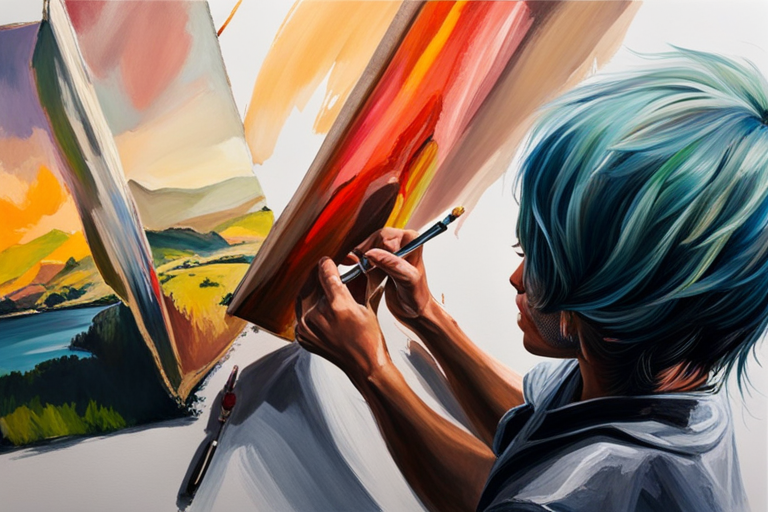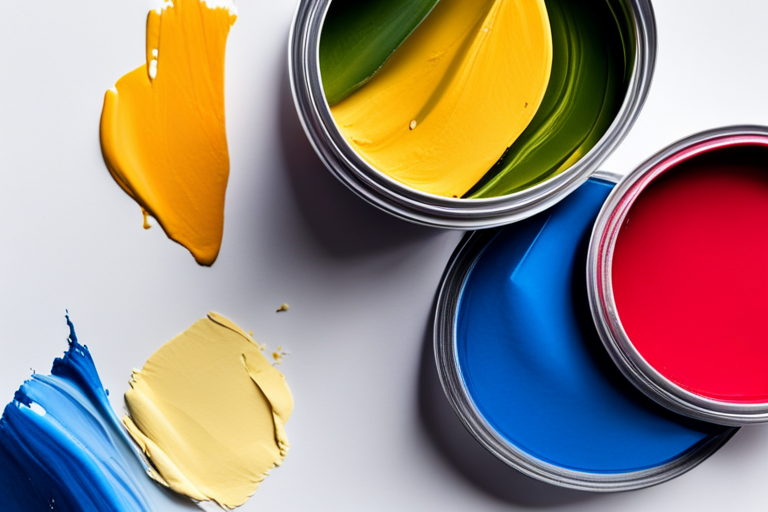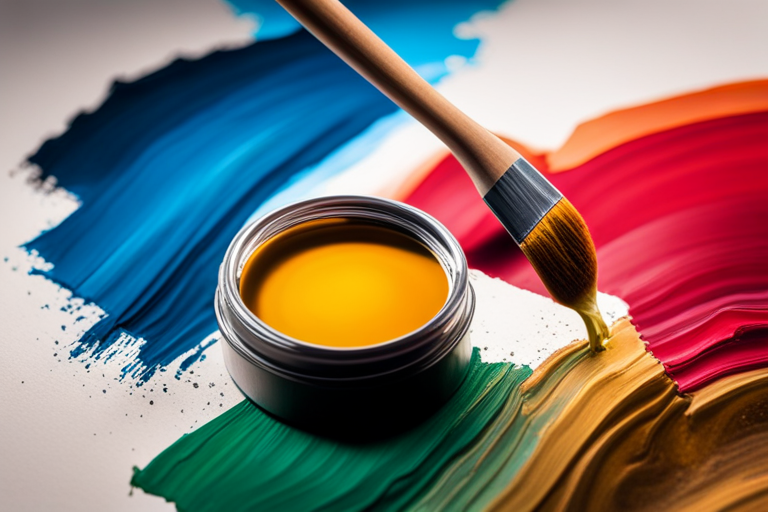You must select the ideal surface for your gouache painting in order to achieve the desired effect. Surface choice affects the texture and visual quality of your painting, and can affect its longevity as well. The wrong choice of surface can make your painting appear flat and lifeless, while the right one can make your colors pop and add depth. This is why in this blog post, we will be discussing the various factors to consider when choosing the perfect surface for your gouache paintings.
We will be touching on the importance of selecting a surface that can absorb the paint, as this allows for greater control over the paint’s opacity and texture. We will also be highlighting the significance of choosing a surface that is sturdy enough to handle multiple layers, as this is critical in the creation of a successful gouache painting. We will provide insights on how to consider the size of your painting when selecting a surface that fits, and how the wrong size of surface can affect the overall quality of your work.
As a gouache artist, you want to create works of art that will last a lifetime. With the right surface, you can achieve that. This blog post is important for our readers who want to learn more about the significance of choosing the perfect surface for their gouache painting. It provides a comprehensive guide on the various factors to consider, tips to make the right choice, and why this decision is essential in creating beautiful, long-lasting gouache paintings.
Surface that absorbs the paint
Before you start painting a surface, it is critical to ensure that it is ready to absorb the paint fully. A well-prepared surface will make sure that the paint adheres well, and your new coat of paint will last longer. Prepping a surface for paint involves following a few standard steps that will ultimately improve the overall outcome of your project.
Here are some tips and tricks to create a surface that absorbs the paint and ensures a smooth finish.
Step 1: Begin by cleaning the surface thoroughly. Use a scrub brush and a solution of water and soap to remove any dirt, dust, and grime from the surface.
Step 2: Sand down the surface with sandpaper to create a more roughened texture. This will aid in the paint adhering and absorbing better.
Step 3: Ensure the surface is free from any cracks or depressions by using a putty knife and a wood filler.
Step 4: Finish up by wiping the surface with a damp cloth to remove any trace of dust particles.
One crucial aspect to note when creating a surface that absorbs paint is the paint’s type and finish. For latex paint, you should use a surface primer that is compatible with the paint type. This primer will create a surface barrier that will prevent the paint from absorbing prematurely. For a more glossy finish or oil-based paint, you can add an undercoat or sealer to achieve the desired finish.
As a result, absorbing paint is a process that takes time and patience, but the end result is well worth it. A correctly prepped surface will improve the paint’s adhesion and longevity, ultimately creating a finish that will last for years to come. The tips and tricks highlighted in this post will serve as a guide to achieving the perfect paint-absorbing surface – so go ahead and get creative!
Choose a surface that is sturdy and can handle multiple layers
Choosing the right surface for layered artwork is crucial since the surface must be durable enough to hold multiple layers without buckling or warping, which could result in your artwork being destroyed. Additionally, it’s important to choose a surface that’s compatible with the medium you’re using and provides the desired texture and finish.
In this section, we’ll take a closer look at the factors to consider when choosing a surface for layered artwork, along with some key tips and useful information.
1. Material: One of the essential factors to consider when selecting a surface for layered artwork is the material. Some popular options include paper, canvas, and wood panels. Paper is a great choice for drawing and mixed media artwork, while canvas is ideal for paintings. Wood panels provide a sturdy and durable surface for mixed media and paintwork.
2. Stiffness: Another vital factor to consider is the stiffness of the surface. A sturdy surface can handle multiple layers without warping or buckling. The stiffness of a surface is determined by its weight and thickness. A heavier and thicker material provides more support, while a thinner and lighter surface may buckle under the weight of multiple layers.
3. Texture: The texture of a surface impacts the look and feel of your artwork. For example, a smooth surface is ideal for detailed work, while rougher surfaces can add depth and texture. When selecting a surface, consider the texture that works best for your artwork.
4. Medium: Different mediums require specific surfaces. For oil and acrylic painting, canvas and wood panels are ideal, while watercolor will work best on heavyweight paper.
5. Quality: Always select high-quality surfaces to ensure the durability and longevity of your artwork. Poor quality surfaces may break down over time, leading to your artwork eventually deteriorating.
It is essential to choose the right surface for layered artwork if you wish to create an artwork that will last for decades to come. These key tips will help you make a well-informed decision when selecting a surface. Remember to pay attention to the material, texture, stiffness, medium, and quality of the surface you choose for each project.
Keep in mind the size of your painting and choose a surface that fits
An important consideration when painting is the size of your canvas or surface. Choosing the appropriate size will not only impact the outcome of your artwork but will also make it easier to work on.
Some Key factors:
1. The size of your painting: The first and foremost thing to consider is the size of your painting. Depending on the subject and style, you may want to choose a small or large canvas.
2. The purpose of your painting: Understanding the purpose of your painting can help you determine the size of the surface you need. For example, if you plan to exhibit your artwork in a gallery, you may want to choose a larger canvas to capture the viewer’s attention.
3. The medium you’re using: Different mediums work better on certain surfaces. For instance, watercolors tend to look best on a rough-textured paper, while acrylics work well on canvas.
4. The size of your work area: You also need to factor in the size of your work area. A bigger canvas needs a larger working space, and not everyone has the luxury of a spacious workspace.
It’s important to note that larger canvases aren’t always better. They can be cumbersome to work on, especially when it comes to finer details. Smaller canvases are great for working on intricate details, but may not have the same visual impact as a large painting.
Useful Tips
When choosing a surface size, consider how you want your artwork to be displayed. If you plan to exhibit it in a small space, choose a smaller canvas to make the most of the available space. If you want your artwork to be the centerpiece of a room, then a larger canvas will work better.
As a result, it is important to choose the right size surface when creating art. Keep in mind the purpose of your painting, the medium you’re using, and the size of your work area. By carefully considering these factors, you can create artwork that is both visually stunning and easy to work on.
Conclusion
When choosing the surface for your gouache paintings, you must take care to select the right one. By picking a surface that absorbs adequate paint, your paintings will result in vibrant, long-lasting colors. It is vital to choose a sturdy surface that can handle numerous layers without warping or tearing.
Lastly, it is essential to keep in mind the size of your painting and select a surface that fits it. Picking the right surface for your gouache paintings can have a significant impact on your final artwork and elevate your artistic skills to the next level.
So, take your time, consider all the factors mentioned, and select the perfect surface that will allow your art to shine!




Leave a Reply